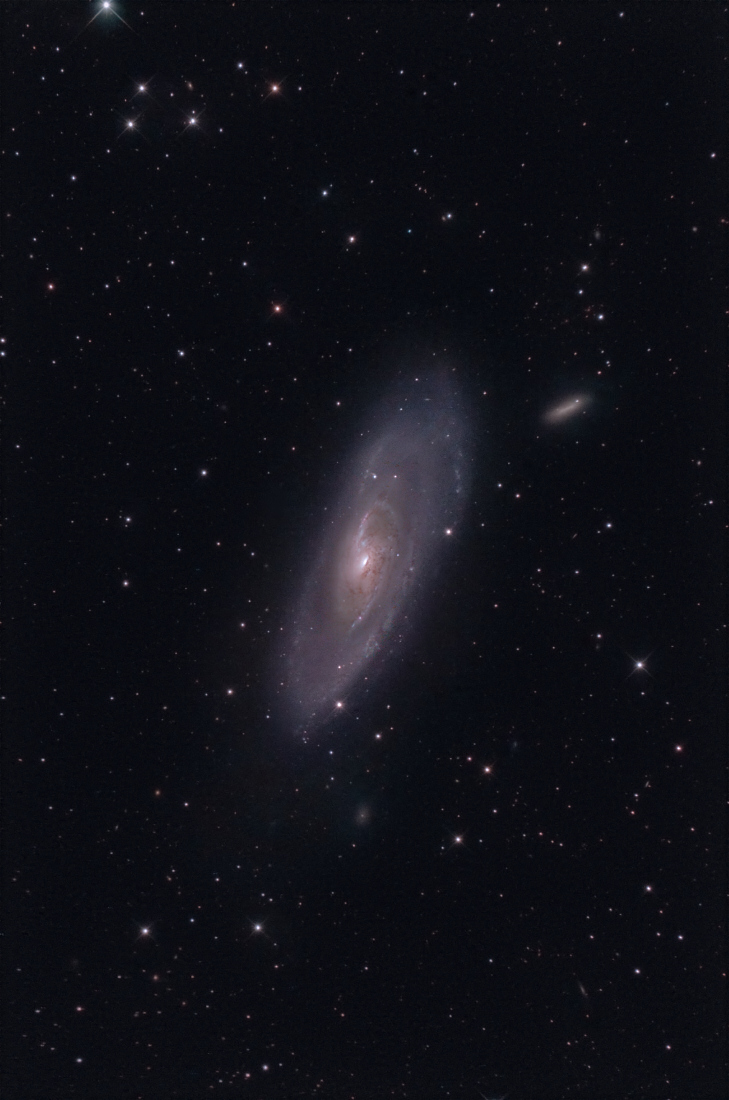
Messier 106 (= NGC 4258) is a bright Sb spiral galaxy in the constellation Canes Venatici about 21 to 25 million light years distant from earth. While M106 is usually classified as peculiar spiral of type Sb (or Sbp), some researchers classify it as an intermediate between Sb and Sc, and intermediate between normal and barred spirals.
As its equatorial plane is similarly inclined to the line of sight to the Andromeda Galaxy M31, many features resemble those of M31, especially the dust lane pattern.
M106 is a Seyfert II galaxy, which means that due to unusual emission lines and x-rays and detected, it is suspected that M106 is the home of a massive dark hole: 36 million solar masses reside apparently within a volume of about 1/24 to 1/12 light year radius. This is then the densest matter concentration currently knwon. The dense matter disk around this object works as a maser (Microwave Amplifier by Stimulated Emission of Radiation, i.e. a microwave laser). The active center also emits jets. This makes it similar to the central "engines" in other active galaxies.
M106 is one of Pierre Méchain's findings, which were later appended as additional objects to Charles Messier's catalog.
Some background galaxies can be seen in this photograph, most prominent are NGC 4248 towards the upper right and UGC 7356 just below M106. Many more fainter galaxies can be found within this photo.
 M106, an enlargement of this photograph.
M106, an enlargement of this photograph.
Exposure Data